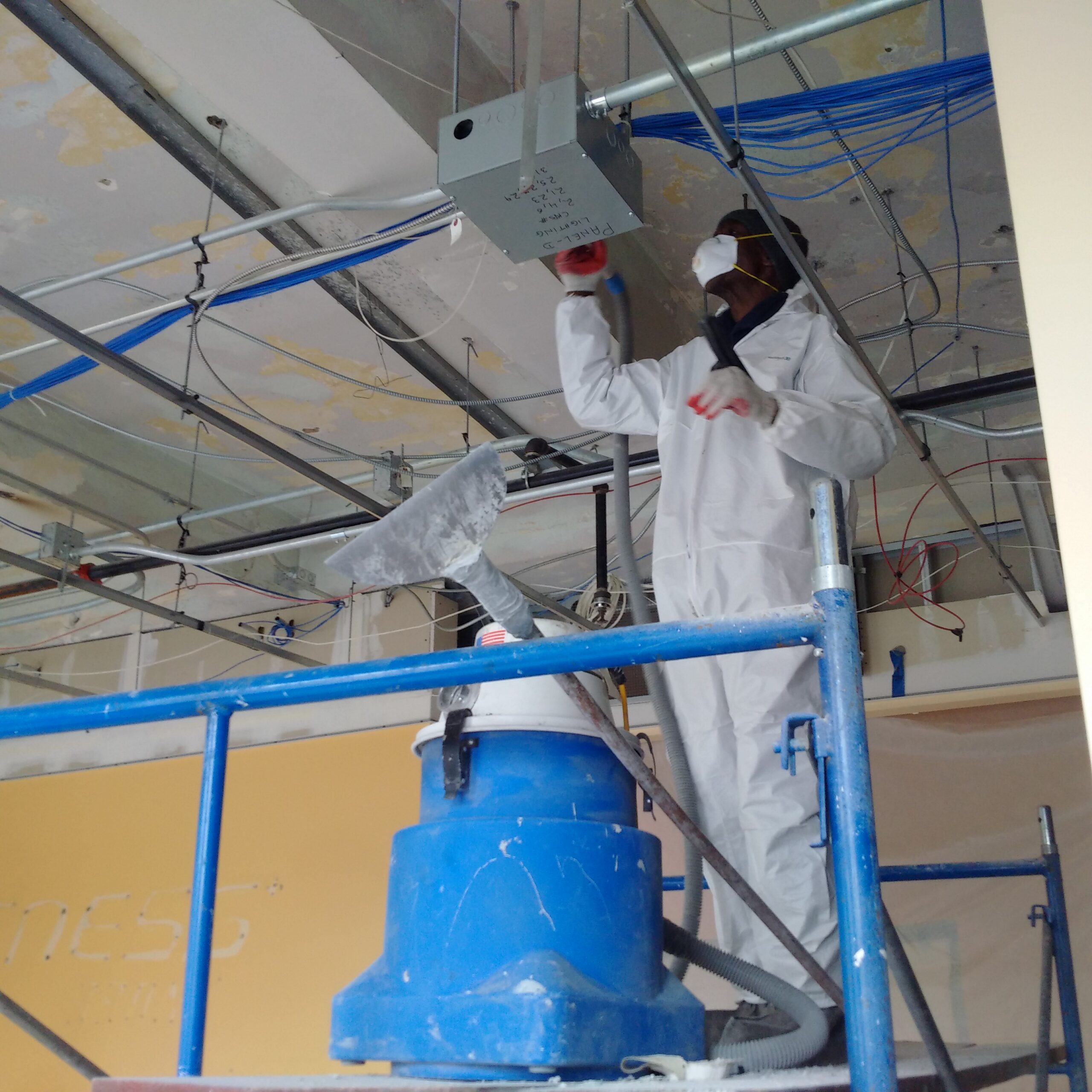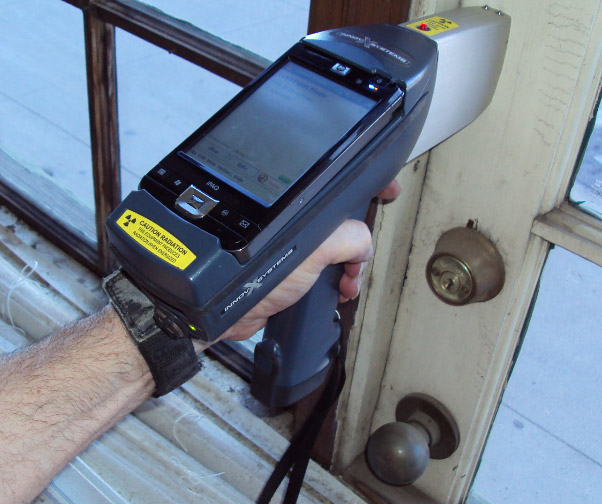NYC Lead Paint Removal Company-- Making Sure Safe and Legal Compliance
NYC Lead Paint Removal Company-- Making Sure Safe and Legal Compliance
Blog Article
Vital Tools and Techniques for Efficient Lead Infraction Cleanup
Dealing with lead violations effectively demands a thorough strategy that mixes the right devices with calculated approaches. The very first step entails furnishing workers with Individual Safety Devices (PPE) to safeguard their wellness. Simultaneously, making use of specialized cleaning tools, such as HEPA vacuum cleaners and lead-specific cleaner, is crucial for extensive contaminant elimination. Reliable containment methods, including plastic sheeting and unfavorable air pressure systems, are necessary to prevent the spread of unsafe materials. Risk-free disposal techniques and stringent adherence to governing guidelines make sure liable handling of poisonous waste. What are the nuanced techniques that absolutely make a difference?
Personal Protective Equipment
Personal safety tools (PPE) is a crucial element in the reliable administration of lead contamination clean-up. PPE serves as an essential barrier, securing employees from the unsafe results of lead exposure, which can lead to serious wellness repercussions. The necessary PPE for lead cleaning consists of respirators, safety apparel, handwear covers, and eye security. Each sort of tools is especially made to minimize various threats related to lead fragments and dirt.
Respirators, particularly those outfitted with HEPA filters, are vital for filtering air-borne lead bits, preventing breathing. Protective clothing, consisting of coveralls and disposable matches, avoids lead dirt from adhering to employees' garments, reducing the danger of secondary contamination.
In addition, extensive training on the proper usage and upkeep of PPE is vital. Employees should be enlightened on donning and doffing treatments to avoid contamination. Routine inspections and replacements of PPE elements are necessary to keep their protective abilities, making sure a risk-free and compliant clean-up procedure.
Specialized Clean-up Devices

Another vital tool is the wet/dry vacuum cleaner, which can properly clean up both dust and fluid impurities. These vacuums often come with HEPA filters to provide an extra layer of safety. Damp cleans or tack towels are also vital for surface cleansing; they are specifically made to capture and hold lead fragments, reducing the risk of spreading out contamination.
For even more stubborn deposits, specialized lead-removal cleaner are called for. These agents are created to break down lead bits, making them easier to get rid of. Scrub brushes with durable bristles can help in this procedure, particularly on harsh surface areas where lead dirt has a tendency to adhere more highly.
Furthermore, encapsulants are used to seal lead-contaminated surface areas, avoiding the release of lead dust. These specialized paints and layers are developed to follow various substratums, providing a long-lasting service for lead containment.
Reliable Control Techniques
Efficient containment approaches are essential in minimizing the spread of lead contamination throughout clean-up tasks. Applying robust containment methods ensures that lead particles do not move to unaffected locations, consequently shielding both workers and browse around this web-site the setting (DOH & HPD Lead Violation Removal NYC).

To boost containment, encapsulants can be related to surfaces that are not being gotten rid of or disrupted. These specialized coverings bind lead dirt, decreasing its schedule for resuspension. Furthermore, all employees have to put on ideal Individual Protective Tools (PPE), including respirators and non reusable fits, to stop contamination spread.
Safe Disposal Practices
Making sure safe disposal methods is a vital element in the monitoring of lead contamination cleanup. Proper disposal alleviates the threat of lead coming back the environment and endangering public health (DOH & HPD Lead Violation Removal NYC).
Moving lead waste calls for adherence to strict guidelines. Using certified contaminated materials carriers makes certain that the materials are handled responsibly. Documentation, including manifests detailing the type and quantity of waste, need to accompany shipments to track the waste from the site of beginning to its last disposal location.
Designated contaminated materials disposal centers are outfitted to handle lead-contaminated materials securely. These centers usually use sophisticated techniques such as stabilization, solidification, or chemical treatment to reduce the effects of the lead before disposal. Landfilling in specialized, lined locations that protect against leachate from infecting groundwater is a typical method for final disposal.
Regular training for employees entailed in lead garbage disposal is vital to preserve safety criteria and protect against unexpected exposure. By sticking to these techniques, organizations can significantly reduce the ecological and health and wellness impacts linked with lead contamination.
Regulatory Compliance Tips

Sticking to governing compliance is paramount in the effective execution of lead contamination cleaning. Understanding and following federal, state, find this and local laws guarantees not just the security and wellness of individuals yet additionally the legal and economic well-being of the clean-up company. The Epa (EPA) sets rigorous standards, such as the Lead Improvement, Repair Work, and Paint (RRP) Guideline, which mandates correct certification and training for specialists taking care of lead-based activities.
Conformity starts with a comprehensive evaluation of relevant regulations and regulations. Organizations needs to stay updated on any legislative modifications, which can be promoted via normal training sessions and subscribing to industry updates. Paperwork is one more important conformity facet; keeping thorough documents of all tasks, consisting of examination why not try these out reports, employee training logs, and disposal materializes, is necessary.
In addition, involving with certified lead inspectors or run the risk of assessors makes certain that lead threats are correctly determined and alleviated. Companies must enforce making use of Individual Safety Tools (PPE) and make sure that safety and security procedures are strictly followed. Clear communication with stakeholders, consisting of workers, clients, and governing bodies, will certainly cultivate a culture of compliance and liability, eventually contributing to a more secure and much more efficient lead clean-up process.
Verdict
Effective lead offense clean-up necessitates the integration of specialized devices and calculated methodologies to make certain security and efficacy. Making use of HEPA vacuums, specialized cleaning representatives, and effective control techniques such as plastic bed linen and unfavorable atmospheric pressure systems is important. Individual protective tools (PPE) safeguards workers from exposure, while safe disposal methods and rigorous adherence to regulative conformity are important for sensibly managing contaminated materials. Jointly, these steps substantially reduce wellness risks and add to a cleaner environment.
Report this page